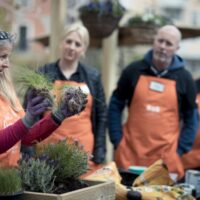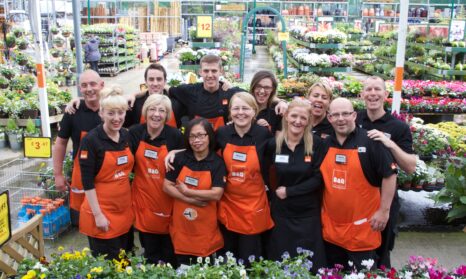Engaging colleagues and customers in sustainability
Engaging customers in sustainability starts with getting your colleagues on board
Here are three key insights I gleaned on how to tackle the challenge of embedding your sustainability strategy with colleagues and customers:
Build sustainability into everyone’s objectives as a way to take collective responsibility for your strategy.
We heard from Jane Marsh, Group People and Culture director at Innocent. Bioregional has just started to get to know Innocent better through our recent work helping its sustainability team to prepare data for its first sustainability report since its CSR strategy relaunch. But this was the first time I’d heard them speak about staff engagement.
As part of its CSR refocus, Innocent has been asking all of its staff to add a sustainability ‘role’ to their job description in a bid to create a workforce of “Fruit Towers heroes”.
Staff can choose to be an 'agitator', 'activator', 'ambassador' or 'protector'. The majority of board members act as protectors, directly supporting the sustainability strategy and holding teams accountable for actions.
The ambassadors, meanwhile, are tasked with inspiring and sharing the strategy and ambitions with others, while the activators actually have to deliver the sustainability strategy. More than half of Innocent's staff members have adopted the agitator role. Agitators are more grassroots in their involvement, but are asked to come up with and implement ideas that can improve sustainability both at home and at work.
It strikes me that many businesses still rely heavily on a core sustainability team to drive its strategy. Innocent’s approach is something that other businesses could learn from to strengthen staff involvement in delivering their sustainability strategies.
Let your colleagues be ambassadors for sustainability and become the leaders of the future.
We heard from a number of big brands about how they were involving hundreds of colleagues in practical projects that are helping to achieve sustainability objectives.
O2, Ikea and L’Oréal all talked about the benefits of getting colleagues from outside of the main sustainability team more involved in projects. For example, Ikea’s ‘Live Lagom’ project has supported Ikea customers and co-workers with products, workshops, bespoke advice and an active community to help save energy and water, reduce waste and promote a healthy lifestyle.
This has been an important part of how Ikea’s core sustainability team is working to involve its 11,000 co-workers in delivering its sustainability ambitions. To date over 300 Ikea staff have led a Live Lagom project, of which 90% of staff said it has helped to develop them professionally, like giving them the opportunity to run workshops and interact with larger numbers of store staff.
Be selective about which aspects of your sustainability strategy you promote to the public.
Even what might appear to be the simplest sustainability strategy to you or me is likely to still be overwhelming to the average customer and hard to relate to. The Body Shop emphasised that whilst its Enrich Not Exploit® programme has 14 big targets, it’s only promoting three of those to its customers, and focusing on those where customers can make a direct contribution. These were:
- Community trade programme: customers want to know that the products they are buying do good. By promoting the community trade programme which now has 26 suppliers from 21 countries around the world, customers know that they can use their purchasing power for good.
- Biobridges programme: The Body Shop wanted customers to be aware of and better understand its work in habitat restoration and forestation. For example, with its #findreggielove campaign, it has created marketing material about the work it’s supporting in Vietnam forests to protect and restore primate habitats. Umbrella species (species selected for making conservation-related decisions) have always been a great way to engage hearts and minds.
- Forever Against Animal Testing: And of course, we all know and love The Body Shop for the strong stance it has always taken on animal testing. It is encouraging customers to take a stand to finally ban cosmetic testing on animals everywhere with its Forever Against Animal Testing campaign by signing a petition. The Body Shop is aiming to get eight million signatures to present the UN General Assembly in 2018.
I left the conference feeling optimistic that companies really are starting to find successful ways to engage colleagues and customers in some really important sustainability issues.
Learn more about how we can help your business with sustainability stakeholder engagement.







